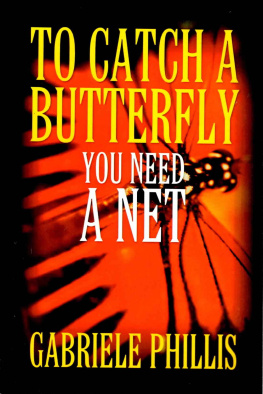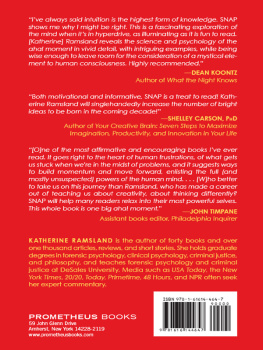Olivia Fox Cabane - The Net and the Butterfly: The Art and Practice of Breakthrough Thinking
Here you can read online Olivia Fox Cabane - The Net and the Butterfly: The Art and Practice of Breakthrough Thinking full text of the book (entire story) in english for free. Download pdf and epub, get meaning, cover and reviews about this ebook. year: 2017, publisher: Portfolio, genre: Religion. Description of the work, (preface) as well as reviews are available. Best literature library LitArk.com created for fans of good reading and offers a wide selection of genres:
Romance novel
Science fiction
Adventure
Detective
Science
History
Home and family
Prose
Art
Politics
Computer
Non-fiction
Religion
Business
Children
Humor
Choose a favorite category and find really read worthwhile books. Enjoy immersion in the world of imagination, feel the emotions of the characters or learn something new for yourself, make an fascinating discovery.

- Book:The Net and the Butterfly: The Art and Practice of Breakthrough Thinking
- Author:
- Publisher:Portfolio
- Genre:
- Year:2017
- Rating:3 / 5
- Favourites:Add to favourites
- Your mark:
The Net and the Butterfly: The Art and Practice of Breakthrough Thinking: summary, description and annotation
We offer to read an annotation, description, summary or preface (depends on what the author of the book "The Net and the Butterfly: The Art and Practice of Breakthrough Thinking" wrote himself). If you haven't found the necessary information about the book — write in the comments, we will try to find it.
The creative mode in your brain is like a butterfly. Its beautiful and erratic, hard to catch and highly valued as a result. If you want to capture it, you need a net. Enter the executive mode, the task-oriented network in your brain that help you tie your shoes, run a meeting, or pitch a client. To succeed, you need both modes to work together--your inner butterfly to be active and free, but your inner net to be ready to spring at the right time and create that aha! moment. But is there any way to trigger these insights, beyond dumb luck?
Thanks to recent neuroscience discoveries, we can now explain these breakthrough moments--and also induce them through a series of specific practices. It turns out theres a hidden pattern to all these seemingly random breakthrough ideas. From Achimedes iconic moment in the bathtub to designer Adam Cheyers idea for Siri, accidental breakthroughs throughout history share a common origin story. In this book, you will learn to master the skills that will transform your brain into a consistent generator of insights.
Drawing on their extensive coaching and training practice with top Silicon Valley firms, Cabane and Pollack provide a step-by-step process for accessing the part of the brain that produces breakthroughs and systematically removing internal blocks. Their tactics range from simple to zany, such as:
Imagine an alternate universe where gravity doesnt exist, and the social and legal rules that govern it.
Map Disneys Pocahontas story onto James Camerons Avatar.
Rid yourself of imposter syndrome through mental exercises.
Literally change your perspective by climbing a tree.
Stimulate your butterfly mode by watching a foreign film without subtitles.
By trying the exercises in this book, readers will emerge with a powerful new capacity for breakthrough thinking.
Olivia Fox Cabane: author's other books
Who wrote The Net and the Butterfly: The Art and Practice of Breakthrough Thinking? Find out the surname, the name of the author of the book and a list of all author's works by series.













